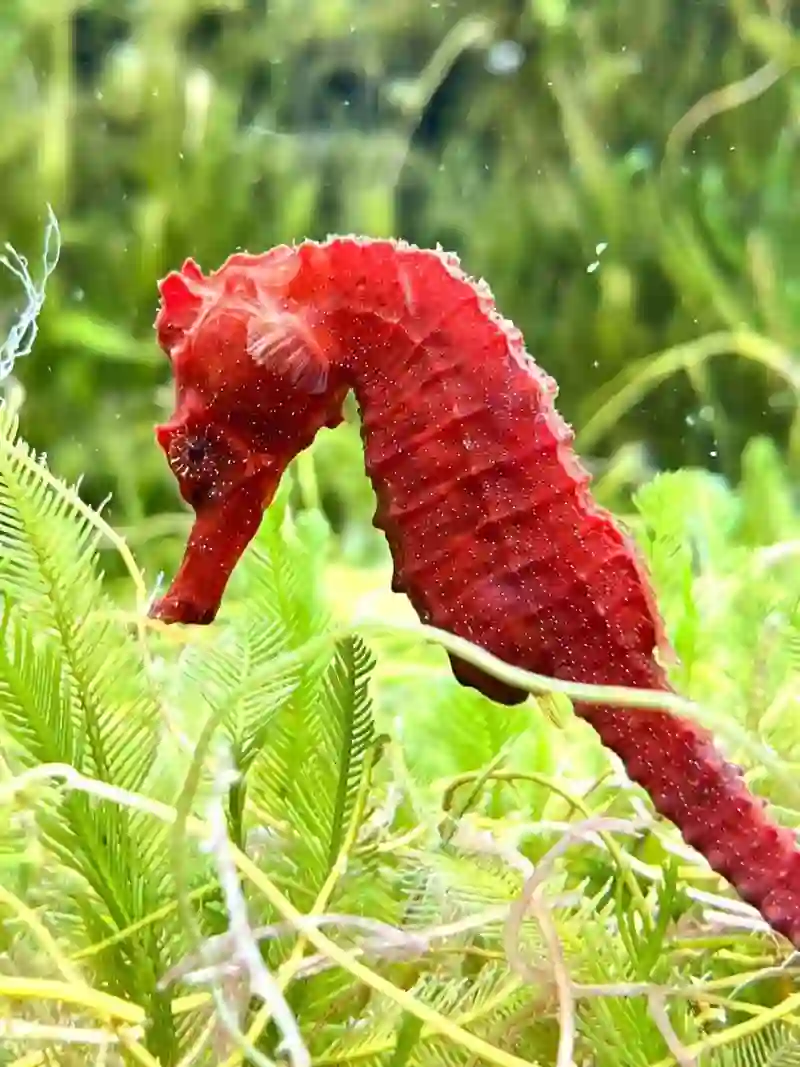
Hippocampus barbouri
Hippocampus barbouri, named after American herpetologist Thomas Barbour, is one of the more commonly recognized seahorse species. Found throughout tropical and subtropical marine environments, they are especially widespread along the coasts of the Indian and Pacific Oceans.
These seahorses are known for their slender bodies and distinctive zebra-like facial stripes. Their coloration varies from yellow and orange to deep browns, often adorned with detailed patterns and spots that allow them to blend seamlessly into coral reefs and seagrass beds.
As bottom-dwellers, Hippocampus barbouri typically inhabit shallow, sheltered environments rich in vegetation. These areas provide protection from predators, a stable food source, and ideal conditions for breeding. Their diet consists mainly of plankton and tiny invertebrates, which they suck up using their long, tube-shaped snouts.
Reproduction in Hippocampus barbouri follows the unique seahorse model: the female transfers eggs into a pouch on the male’s abdomen, where he fertilizes and nurtures them until birth. This reproductive process makes the species a prime candidate for Seahorse Aquaculture, offering researchers and breeders a chance to study and support population recovery in controlled environments.
Unfortunately, this species is under increasing threat from overfishing, habitat destruction, and water pollution. As a result, conservation strategies and Seahorse Aquaculture initiatives have become essential. By cultivating seahorses in captivity, breeders and conservation groups can reduce pressure on wild populations while supporting educational, medicinal, and ornamental trade needs in a sustainable way.
